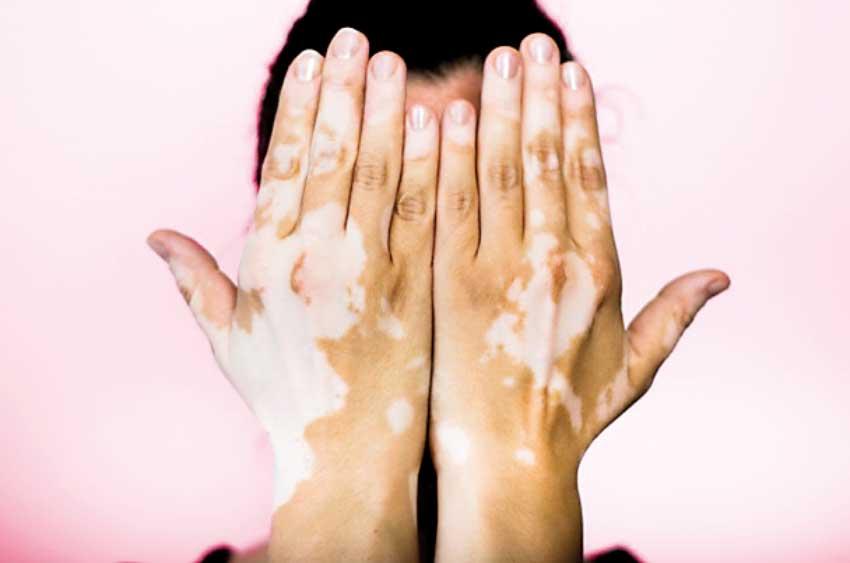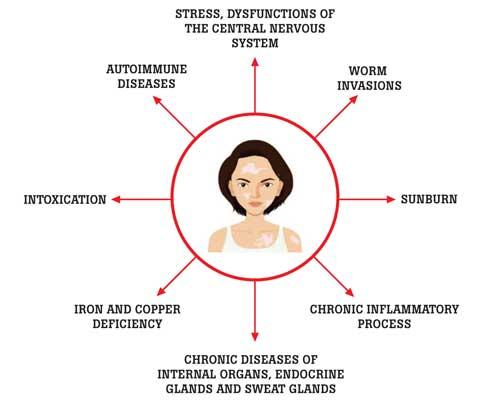Reply To:
Name - Reply Comment

 Vitiligo is a skin condition where patches of your skin lose their colour due to depigmentation. This condition can occur at any age, in children as well as adults, regardless of one’s ethnicity
Vitiligo is a skin condition where patches of your skin lose their colour due to depigmentation. This condition can occur at any age, in children as well as adults, regardless of one’s ethnicity
or gender.
The global community join hands to empower people with vitiligo from all over the world on June 25, the World Vitiligo Day, hoping to shine a light on challenges faced by those suffering from the condition. According to the Vitiligo Research Foundation of the USA about 100 million people worldwide suffer from this condition and it’s important to bring this not so rare condition into the public eye.
Understanding Vitiligo
“The exact cause of vitiligo is not known but it is believed to be an autoimmune disease,” Consultant Dermatologist Dr. Nayani Madarasingha explained. In vitiligo, antibodies produced in the body by our own immune system would act against our own melanocytes. Then melanocytes would no longer produce melanin which is the pigment which gives colour to our skin. This would result in loss of pigmentation in different areas of our skin. “In some people, this can be familial but it can happen without any family history as well.”
There are several types of vitiligo. “One type of vitiligo is a localized type where depigmentation is confined to one particular area, usually with one depigmented patch. This particular type is very responsive to skin grafting and surgical management,” Dr. Madarasingha commented.
“There is another type of vitiligo which usually involve the face, hands and feet. The third type of vitiligo involves the whole body where you can get symmetrical body lesions involving all areas of the body.”
“Because vitiligo is an autoimmune condition, it can be associated with other autoimmune conditions such as thyroid disease and some types of anemia,” Dr. Madarasingha added.
Facing vitiligo with a smile
In her opinion, the biggest problem associated with vitiligo is the psychological trauma arising due the condition. In vitiligo, the depigmented patches in the skin are very much noticeable, especially among dark skinned individuals. Being diagnosed with vitiligo can be life-altering and patients may struggle with self-esteem or depression as they often have to deal with social stigma. Hence, vitiligo patients may benefit from psychosocial support in addition to medical treatment.
In addition, vitiligo patients must be mindful about protecting your skin from the sun. Melanin in our skin help protect it from ultraviolet (UV) light. Dr. Madarasingha emphasised that since the affected areas in the skin lack melanin and they are more prone to get sun damaged. “Therefore, they may get sun burned and later on with chronic exposure to sun, there is a risk of skin cancers developing in areas of vitiligo.” To minimise the risk, patients should avoid overexposure to sun and apply sun screen to protect your skin from overexposure. “We cannot predict how it progress in each individual and in some patients spontaneous re-pigmentation can even be observed,” Dr. Madarasingha added.
The treatments focus on stopping the progression of the disease and achieving re-pigmentation of the affected areas. Treatments may differ based on the area affected by the disease and its spread. “If it is spreading, we might prescribe oral medication to stop the spread.” Other treatments include phototherapy using UV light, topical medications that are applied to the skin including topical steroids and surgical treatment such as skin grafting.
Living with Vitiligo can be made easy by applying skin camouflage products. These cosmetic cover creams help conceal the blemish of vitiligo at least temporarily. This helps patients face their day to day life and integrate with the society without feeling uncomfortable in their own skin.